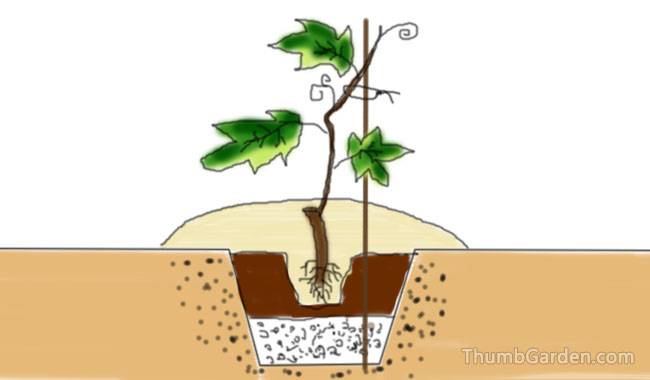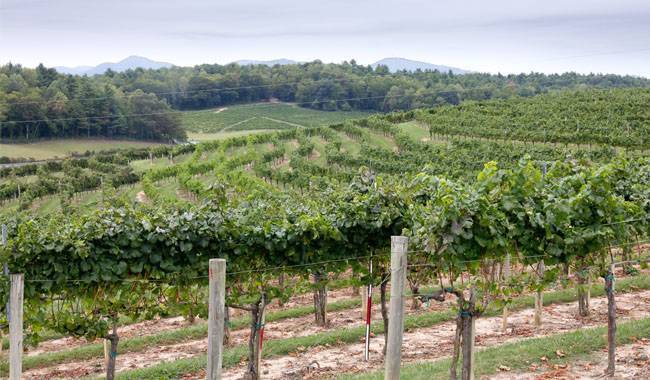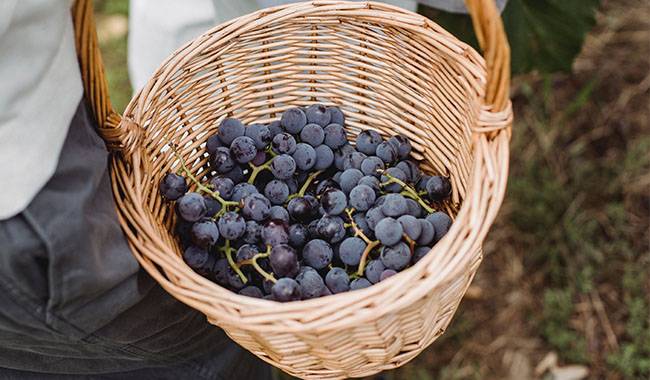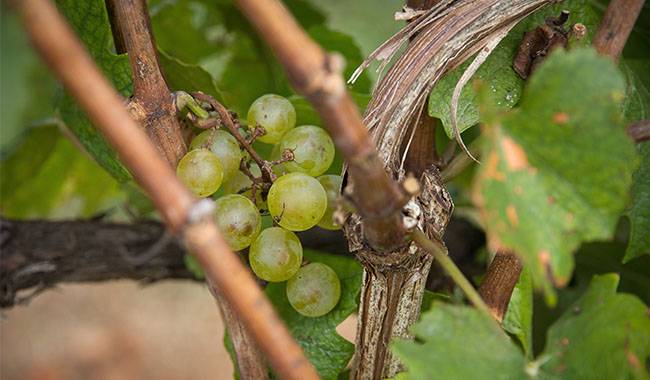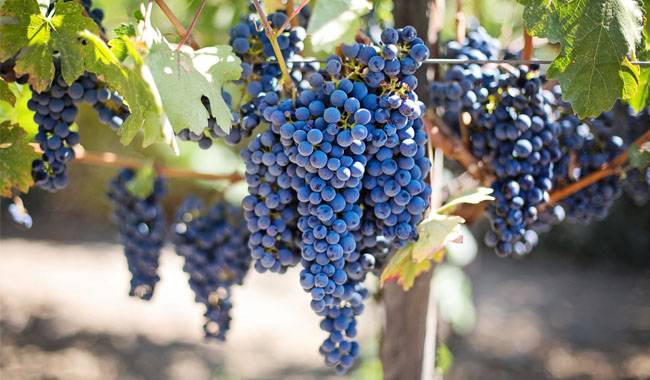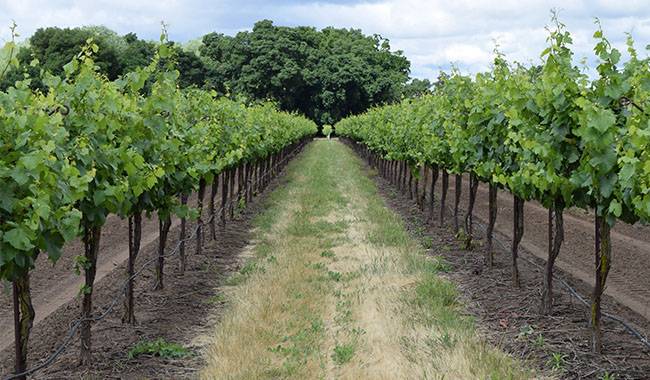
How to plant grapes? Extreme weather is not an obstacle to sunny berries. Even for beginners, getting a bumper crop of grapes in the second or third year after planting is an achievable goal. So how do stop dreaming and start growing grapes…
First of all, let us decide on the two most important tasks when growing grapes: we will choose a place to grow them and the grape variety we want to grow.
In principle, the vine will grow almost everywhere (except for solid shade) and if you take care of it, at least it will bear fruit.
However, proper sowing in the right place will allow you to obtain really high yields with less effort.
Remember, planting seedlings of substandard varieties in the vineyard will take up your time, energy, and good mood. You may be disappointed with the grapes, even though the mistake is entirely yours.
WHERE TO PLANT YOUR GRAPES
The vineyard should be in full sun and protected from the wind, for example, on the south wall of a house, a barn, or a south-facing fence with good drainage.
If there is a minimum slope on the site, plant the grapes on a gentle south or southwest slope so that the rows face north-south.
If the plot is flat and the walls are occupied, build a strong fence 1.8-2m (5.9-6.56 foot) high, oriented along an “east-west” line, at any convenient place on the plot, to give your grapes a place to grow.
You will immediately learn the secrets of planting a vineyard! To do this, you can also use dense hedges or barriers made of available materials, such as vines or reeds.
TIPS FOR NEW GRAPE GROWERS
The method of planting grapes depends on the type of soil. There may be variants, but it is usually recommended to plant grapes in sandy soils, on fertile loamy and clay soils, and in areas where groundwater rarely occurs, on ridges, which in the past were called “creation”.
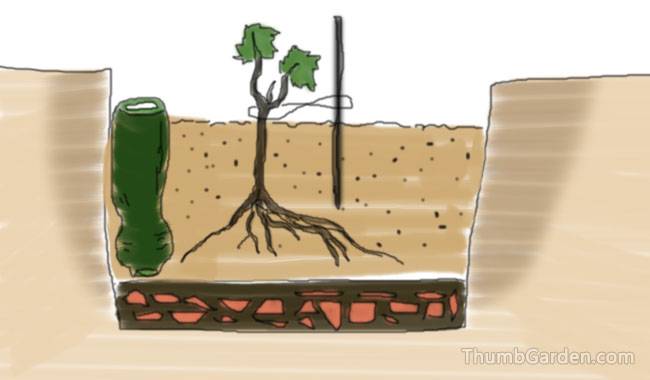
To water and fertilize the grapes, I placed a plastic bottle with a cut-edge bottom between the seedlings.
For table varieties, as the bushes got older, I replaced them with asbestos cement fittings, and for the “technicians” (wine varieties), I removed them all after three years.
Mature wine grapes must get their own water from the soil, and the deeper the roots, the better the wine in the berries.
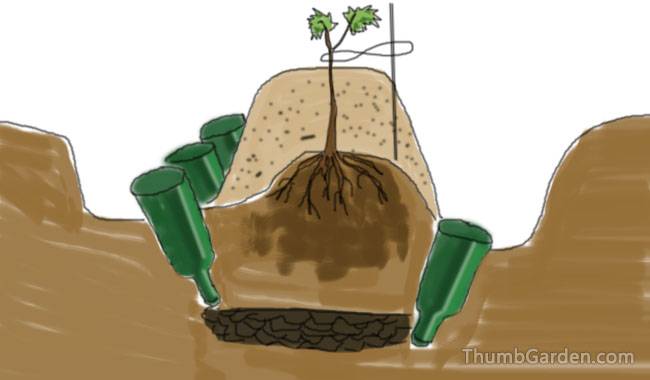
Do not rush to the “permanent residence” of seedlings
Especially if these varieties are on trial. Let them live until the first signal brush in the school (easier to cover).
In the first year, some northern growers do not plant seedlings in the open ground at all, but place them in removable containers (e.g., in buckets), half-buried in the ground.
In the fall, the containers with the seedlings are moved to the basement and planted in late spring. Such seedlings will bear fruit long before.
Do not plant vines spontaneously
If your vines are not planted “on-site”, the vineyard must be planned. Since they are planted at different intervals, the varieties can be grouped according to their purpose.
For juice and wine varieties the distance between bushes is 0.8m (2.62foot), for table varieties – at least 1.5m (4.92foot), and between rows 2-2.5m (6.56-8.2foot).
It is recommended to clarify the growing intensity of the selected variables in order to correctly calculate the ideal place.
Grouping grape varieties by maturity and frost resistance will help in the care of the grapes. You do not need to spray and cover everything.
Do not plant grafted seedlings vertically (from European and southern nurseries)
Instead, place them at the maximum possible angle, otherwise, there will be problems with the maturation of the vines. Gradually transform them into your own roots.
Don’t forget that grapes have vertical polarity
When opening, tie the horizontal arrow to a grate or stake – then all the annual green shoots will grow equally. In a vertical garter, the buds grow intensively only from the upper eye, while from the lower eye they grow weakly or not at all.
Limited watering
Only the young vines need to be watered during the first two years, while regular top-up watering must be applied to all grape varieties in the fall. Stop watering 7-10 days before the expected flowering, as too much water can cause color loss and delay crop maturity.
Do not use sprinkles as they can cause disease
Layout drainage channels and place irrigation pipes on one side of the row spacing, no less than 30-50cm (11.8-19.6inch) from the bottom of the bush. Grapes do not like wet foliage and damp ground. If possible, arrange shade panels on the vines.
Careful and punctual green management
It is unacceptable to remove all the growing points on the branches at the same time: chasing the top and squeezing the stepchildren. After all, there is a risk that the overwintering shoots of the bush will start to grow and their potential will be greatly reduced. Do not break the stepchild completely, leaving 1-2 sheets of paper. Straighten the crown immediately after casting in August.
Pruning the grapes is necessary
Pruning the grapes is necessary, otherwise, the berries will be crushed and the bushes will grow unnecessarily. However, in the year of sowing, there is no pruning, except in the fall to remove the green part of the immature buds.
From the 3rd year on, prune the branches according to the recommendations (short or long term pruning), but do not follow the recommended total load arbitrarily, because your conditions (undulation, soil, the sum of active temperatures (CAT)) will correct it. Make a note of the fruit buds exclusively for your growing buds.
At the time of natural leaf drop
Do not prune in autumn until the natural leaves have fallen or the night temperature is below zero (early November). Do not prune in the spring because the “weeping” (sap runoff) of the vines will weaken the plant’s growth.
In the north, it is more reliable to use a fan or semi-fan types of non-standard structures rather than high-standard structures, including those for arborvitae.
Winter Shelter
All young plants need a winter shelter for the first 2-3 years. The grapes are tied to a temporary lattice for the first year of growth.
In autumn, the shoots are removed and covered with two and three layers of air-drying shelters. As bedding – branches or boards of spruce, above the young shoots – a layer of spun-bond or corrugated cardboard with a layer of film (roofing paper, old linoleum) attached to it.
Snow will complete the rest of the work. Leave ventilation slots at the end of the shield.
Do not remove the cover completely immediately in spring. After removal, please leave a few layers of spun-bond or Rudd silicone near the frost.
Record keeping
Record in a diary the time and characteristics of the grapes planted, flowering, ripening, pruning, and loading. Otherwise, you will forget and lose the most valuable information for the analysis of the varietal tests. You and the next generation of northern winegrowers who will surely follow you will need it very much.
STRONG GRAPE VARIETIES FOR WINTER
In the north, the most important requirements for grape varieties are frost resistance, crop and vine maturity. However, the so-called “no disguise” should not be given priority.
This concept is relative and does not depend on the variety, but on what the minimum winter temperatures are in your country house.
The first step is to choose the earliest frost-resistant varieties. Later, with experience, one will learn that viticulture in the north can also offer us certain benefits;
For example, longer daylight hours, which can partially compensate for the lack of warmth in the grapes. Then, you can experiment with new varieties.
In addition, the north is virtually free of grape pests and diseases. However, it is better to prevent the dangers. There are so-called complex-resistant grape varieties – highly resistant to both frost and disease.
It is also necessary to determine the purpose of the grapes. Why do you need it: for tables, for juice and wine, for decorating gazebos, or just for ornamental purposes? Today, there are more than 15,000 grape varieties, so there are many choices.
METHOD OF PLANTING GRAPE SEEDLINGS
- To plant a two-year-old seedling, they dug a hole 50-60cm (19.6-23.6inch) deep in the same width and length.
- At the bottom a drainage layer was placed, expanded clay or crushed bricks 20-25cm (7.87-9.84inch) thick. Drainage can be omitted if the location is high and melted and there is no rainwater stagnation.
- Pour an equal portion of the soil mixture of garden soil, sand, peat, and humus over the drain.
- Add 2 tablespoons of superphosphate or compound fertilizer to each pit and shovel a few handfuls of wood ash.
- Before sowing, water the seedlings thoroughly, then remove them from the pots and place them in the prepared hole, which should also be sprinkled with water.
- Sprinkle the soil, press it firmly, water it again, and place a mound 15-20cm (5.9-7.87inch) higher around the root ring.
- The seedlings must be tied to the support. When planting several bushes in succession, you need to dig not separate holes but trenches of the same depth.
- The distance between seedlings in a row is 1-1.5m (3.28-4.92foot) from each other which determines the length of the trench.
